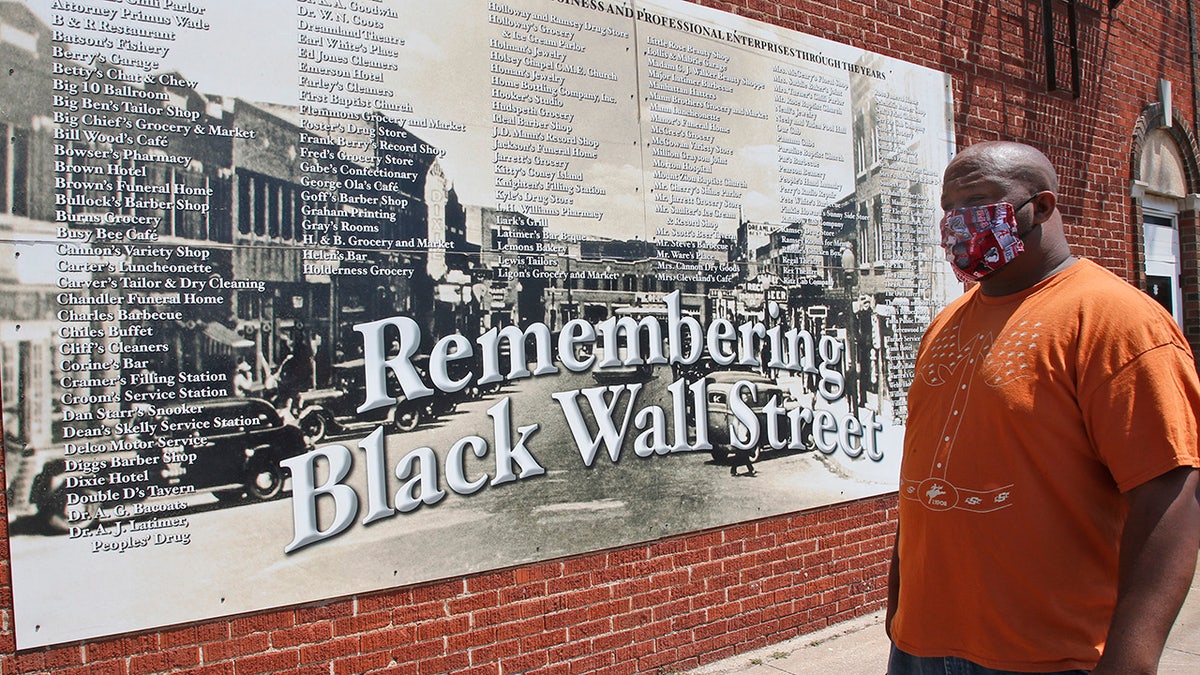Larry Elder: California reparations panel should be addressing fatherless homes
2024 presidential candidate Larry Elder reacts to demands for reparations on 'Fox News Tonight.'
An Oklahoma district court judge tossed a lawsuit filed in 2020 seeking reparations for the 1921 Tulsa Race Massacre, which some hoped would provide justice to the remaining three survivors of the attack before they die.
The Associated Press reported that Judge Caroline Wall dismissed with prejudice the legal suit that would have forced the City of Tulsa and others to pay for the damages that occurred in Greenwood, a once-thriving Black district.
The three remaining survivors of the attack – Lessie Benningfield Randle, Viola Fletcher and Hughes Van Ellis – filed the lawsuit in 2020.
"The city remains committed to finding the graves of 1921 Tulsa Race Massacre victims, fostering economic investment in the Greenwood District, educating future generations about the worst event in our community’s history, and building a city where every person has an equal opportunity for a great life," Tulsa Mayor G.T. Bynum said, adding that city officials had not received the full court order.
WOMAN, 105, WHO SURVIVED 1921 TULSA RACE MASSACRE LEADS LAWSUIT SEEKING REPARATIONS

FILE - In this June 15, 2020 file photo, Freeman Culver stands in front of a mural listing the names of businesses destroyed during the 1921 Tulsa Race Massacre in Tulsa, Oklahoma. (AP Photo/Sue Ogrocki)
Wall said in her order that she was throwing the case out because of arguments made by the city, regional chamber of commerce and other state and local agencies.
Last year, the judge denied a motion from the defendants to dismiss the case, allowing it to proceed.
TULSA'S FORMER BLACK WALL STREET TRIES TO REMAKE ITSELF

Forensic scientists may have gotten a break in their quest to identify victims of the 1921 Tulsa Race Massacre. (Mike Simons/Tulsa World via AP, File/Tulsa World via AP)
"Judge Wall effectively condemned the three living Tulsa Race Massacre Survivors to languish — genuinely to death — on Oklahoma’s appellate docket," Justice for Greenwood, a group that supports the lawsuit said in a statement. "There is no semblance of justice or access to justice here."
The massacre began on the morning of May 31, 1921, after a Black man accused of sexually assaulting a white woman was arrested and jailed at the Tulsa County Courthouse.
Out of fear that the Black man would be lynched, a large group of armed Black men rushed the courthouse to defend him, according to a 2001 report from the Oklahoma Commission to Study the Tulsa Race Riot of 1921.
EXPERTS INCH CLOSER TO IDENTIFYING 1921 TULSA RACE MASSACRE VICTIMS
The man’s charges were later dropped.
The lawsuit filed by the survivors and descendants of those who were killed argues that by June 1, 1921, "A large, angry White mob, including some members of the Tulsa Police Department, the Tulsa County Sheriff’s Department, and the National Guard," had overwhelmed the 35-square-blocks of the all-Black Greenwood District, "killing hundreds of Black residents, injuring thousands more, burning down over one thousand homes and businesses and stealing residents’ personal property."
Seven defendants are named in the lawsuit, including the city of Tulsa, current Tulsa County Sheriff Vic Regalado, and the Oklahoma Military Department.
CLICK HERE TO GET THE FOX NEWS APP
The lawsuit is based on the state’s public nuisance law and claims city and county officials actively thwarted efforts by the community to rebuild after the massacre. It also claims officials neglected the Greenwood and predominantly Black north Tulsa community in favor of overwhelmingly white sections of the city.
The Associated Press contributed to this report.


